The Sauna Boom in Ireland
By Bláthnaid King, November 17, 2025
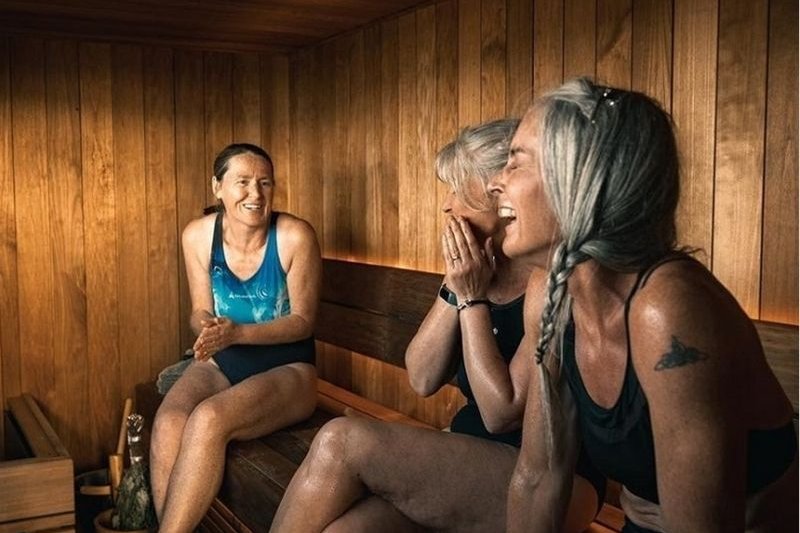
At sunrise on the Wicklow coast, steam curls from a cedar-clad barrel sauna parked just above the shoreline. Sea swimmers, fresh from the icy shock of the water, shuffle inside. Phones stay tucked away, voices soften, and for the next 45 minutes, the only priorities are the sting of steam, the rhythm of breath, and the slow return of feeling in toes and fingertips.
Scenes like this have become remarkably common in a short space of time. What was once a novelty borrowed from Nordic holidays has settled deep into everyday Irish life.
You’ll find saunas overlooking piers in Donegal, perched above rugged coves in Cork, and tucked beside commuter routes in Dublin, where early risers slip in before the office day begins. They appear in community car parks, forests, hotel gardens, and suburban backyards. Some are handcrafted by local carpenters, others are hitched to trailers and rolled from beach to beach like nomadic wellness cabins.
The surge hints at something deeper than just health-consciousness shifting in Irish culture: a craving for ritual, for community, for places outside work and home where we can sit still, breathe and thaw out from the chaos of the week.
The big question is whether this sudden wave marks a passing trend or a lasting transformation in how people in Ireland connect, recover, and look after themselves.
Either way, the nation is heating up.
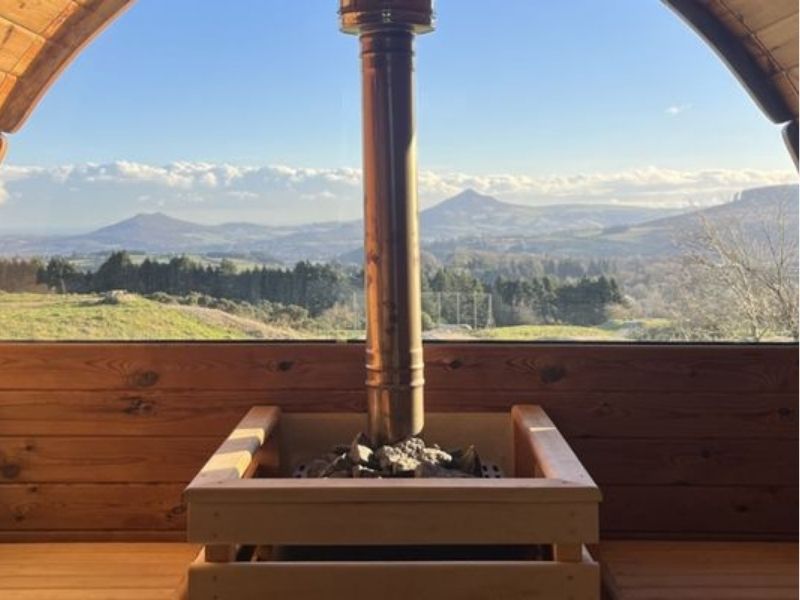
Did Ireland always have saunas? The ancient roots of heat.
Long before the barrel saunas and sea-dip rituals of today, Ireland had its own tradition. Scattered across the countryside, you can still find the stone remains of the teach allais, the Irish sweat house.
These small, beehive-shaped huts were built from dry stone, sealed with clay and turf, and heated with fire. People would crawl inside to sweat out illness, soothe aching joints, or simply reset their system. Some communities used them right into the late 19th century.
The practice might have faded from daily life, but the memory never fully disappeared. The cultural thread is now being consciously picked back up: in Glencullen, visitors hike through the forest to reach a yurt sauna hidden in the Wicklow hills, where heat therapy blends with Irish mythology, aromatherapy, leaf-whisking, and the simple grounding of being far from everything.
“It’s a switch off. A spiritual thing. You go to a different world up here. When you park up, you have to trek 10 minutes up the Wicklow hills, through a forest, to get to the place. So you are already immersing yourself in the nature, wilderness and serenity of Glencullen. People leave feeling more grounded”.
Peter Priestley, Tigh N’ Alluis
Tigh ’N Alluis, the operator behind it, is currently building a full traditional sweat lodge to honour Ireland’s own heat heritage. They describe the experience as a “switch off… a spiritual thing,” something that connects people to nature as much as to warmth.
For years, the narrative was that Irish people were “adopting” Nordic sauna culture. In reality, what’s happening now feels more like a revival. A once-forgotten tradition is being reimagined with reclaimed beauty, cedar timber, panoramic windows, and a modern understanding of wellbeing.
As Steve Crosbie, owner of Fad Saoil Saunas put it, this isn’t a trend lifted from abroad. It is “a revitalisation, shaped for modern life.”
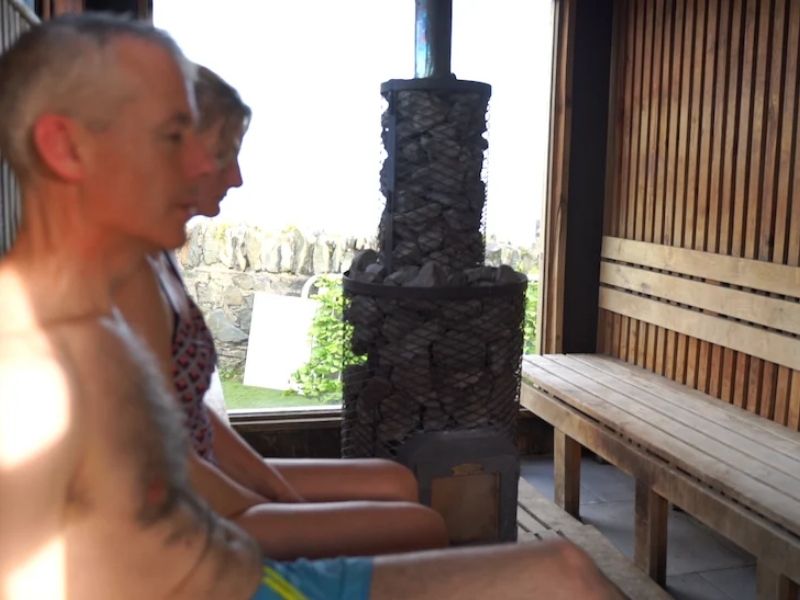
The numbers behind Ireland’s sauna boom
The scale of Ireland’s sauna surge is best understood in raw numbers. In just a few years, the country has evolved from a handful of scattered operators to a fully developed national heat network.
There are at least 242 independent saunas now active across Ireland. Roughly 90% of them opened since 2020, and astonishingly, more than half launched in 2025 alone.
That means the number of new saunas opened in 2025 is almost equal to the total number that existed in the previous five years combined. Even by Ireland’s fast-moving wellness standards, this is a runaway phenomenon.
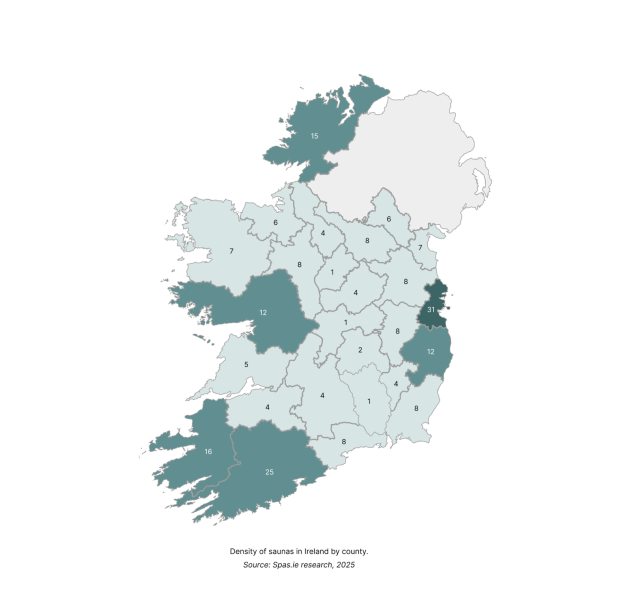
- Dublin tops the charts with 31 operators. Urban demand drives early-morning and post-work sessions for commuters.
- Cork sits at 25, proving the capital’s coastline isn’t the only one getting hot.
- Kerry (16) and Donegal (15) have become pilgrimage spots for “sea and steam” weekends.
- Wicklow (12) remains one of the early pioneers; the birthplace of some of Ireland’s most influential sauna operators.
Sandycove, Dublin, home of the Forty Foot, now has three separate sauna businesses operating within 500 metres. If anything proves demand, it’s the willingness of hundreds of people to queue in damp swimming togs on a freezing shoreline just to sit in a cedar box and sweat together.
This accessibility has changed who gets to participate. You no longer need a hotel booking or a spa day. You don’t need luxury. You just show up and step into the heat.
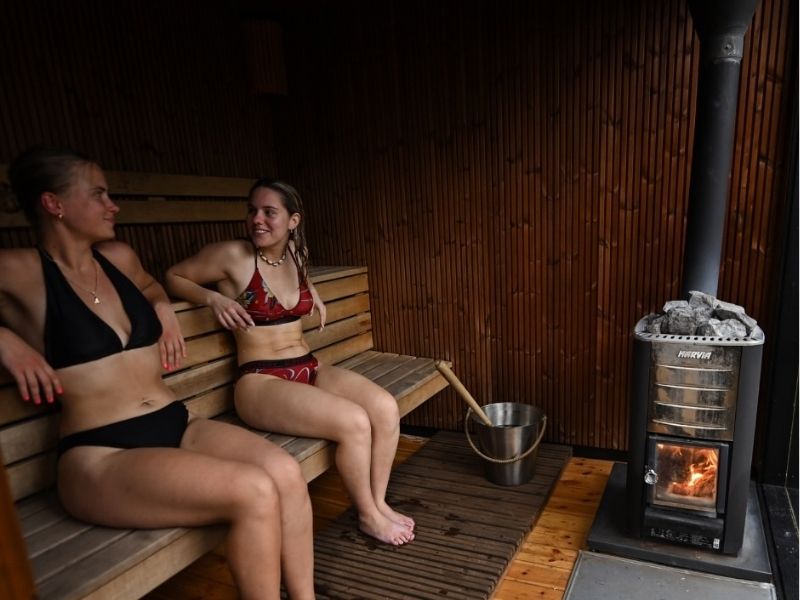
What spurred this growth?
It may not be a coincidence that the rapid rise in sauna use after COVID-19. The stresses brought on by the pandemic was new or heightened for many Irish people, yet those who discovered sauna during this time were often surprised how beneficial a tool it was for destressing.
During the pandemic, people often found themselves stuck in a “sympathetic state,” the nervous system’s heightened stress response. Both heat and cold exposure function as controlled stressors that can help trigger the “rest and recover” state, known as the parasympathetic response. Experts in the field view saunas as practical methods for rebalancing the nervous system, especially given the normalisation of chronic stress in modern life.
For the general Irish public, the appeal is much simpler, “you just feel great after it”.
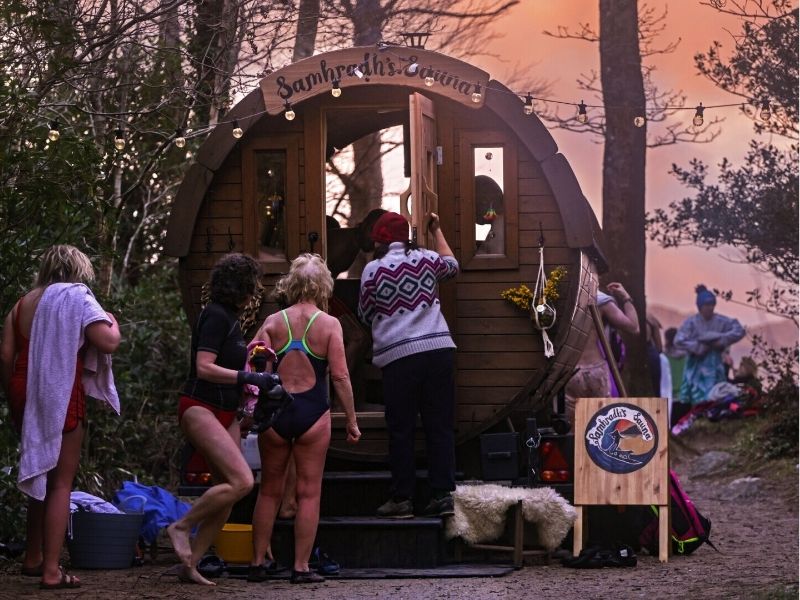
Who’s getting in the heat? A national cross-section.
Walk past any seaside sauna and you’ll see the full cast: sea swimmers wrapped in fleece-lined robes, runners stretching hamstrings on the sand, GAA players blasting warmth into tired quads, desk-bound Dubliners exhaling the week out through their shoulders, new parents stealing an hour of silence they didn’t know still existed, twentysomethings, sixty-somethings, and everything in between.
It’s rare to find a wellness movement that isn’t pinned to a specific age, income, or subculture. Yet here the common thread is not who people are but how they want to feel: calmer, warmer, clearer, more connected.
“People are prioritising simple, proven ways to feel better, and sauna delivers calm, sleep, recovery and headspace in one hit. It’s also a proper “third place”: you show up, switch off, and actually talk to people. Cold-water culture helped open the door, but the ritual of heat (and the way you feel after) is what keeps them coming back.”
Dan O’Connor, Hot Box Sauna
Operators across the country say their busiest slots are early mornings, weeknights, and weekend mid-mornings. A sauna session typically costs €16–€35 for 45–75 minutes, which puts the sauna firmly into weekly routine territory rather than a rare indulgence.
Fad Saoil Saunas sees regulars coming two or three times a week, making sauna a part of their routine, like going to the local pub.
Meanwhile, Matt Burke of Helios Sauna notes seasonal shifts, with an uptick in the winter season, citing saunas as “a great way to warm up and chill out when there’s not much to do outside.”
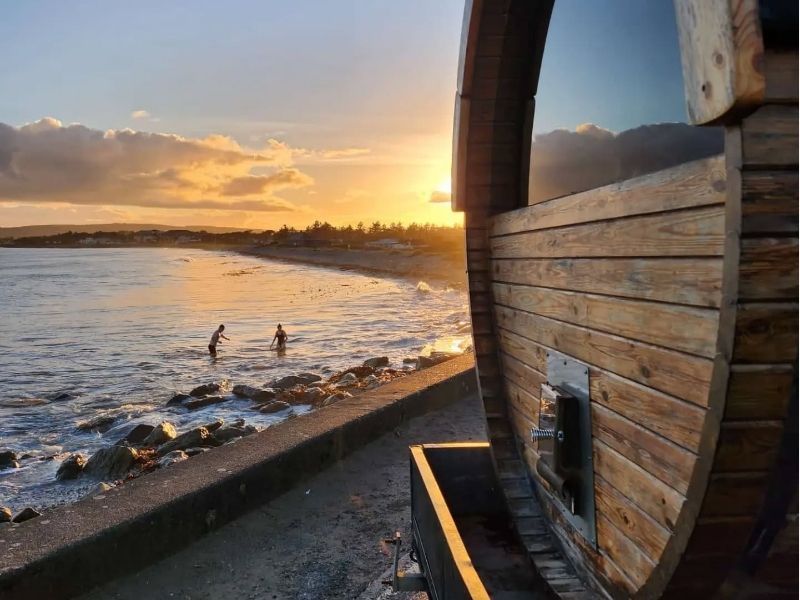
Ireland’s love of cold-water sea swimming.
If there’s one movement that prepared Ireland for a sauna surge, it was sea swimming. Over the last decade, places like the Forty Foot and Blackrock Diving Tower have gone from local swim spots to year-round gathering points.
The community was already there: organised WhatsApp groups, sunrise dips before work, weekend plunges that turned into rituals. When mobile saunas arrived beside those cold-water hubs, the fit was immediate. You could leave the sea, regain warmth, and stay a little longer with the people you came with. It turned a five-minute swim into a social activity that lasted an hour.
The appeal of contrast therapy, which is alternating cold and heat, also made intuitive sense. Sea swimmers already sought the post-dip rush; a sauna just extended that feeling.
Importantly, this wasn’t limited to coastal towns. The idea spread inland to lakes, rivers, and urban rooftops. Ireland’s damp climate, once the enemy of outdoor plans, became the perfect excuse to step into a warm room and stay there.
Now, in almost any county, you can find a queue forming beside a trailer sauna as people emerge from cold water. What began as a practical pairing has become a normal part of weekend plans.

Who is opening saunas?
The people behind Ireland’s sauna boom tend to share a similar motivation: a genuine passion for the experience rather than a purely financial goal. Many started with a love of sea swimming or wellness and turned it into a small business that grew faster than expected.
Dee and Ed from Hot Pod Saunas in Dungarvan describe their story as typical of this new wave. Both worked full-time and were raising two children when they decided to combine their free-time hobby with a side project.
“Myself and my husband love the sea and are into sea swimming in our downtime. We live in Dungarvan, which is an active town with a sea swimming community. We had seen other mobile saunas in Ireland and thought wouldn’t it be great to join something we love (spending time by the sea) with a side hustle.”
Dee, Hot Pod Saunas
She joked that “A worst case scenario, if it didn’t work out, we’d end up with a sauna in our back garden” However, within a few months, demand was strong enough for them to open a second location, and today they run three locations.

Home Saunas
As public sauna culture has grown, a parallel trend has taken hold in Irish homes. More people now want the heat experience without leaving their own property, and a small domestic market has begun to develop around that demand. Several bespoke sauna builders have launched since 2023, and many began, like the operators on the coastline, with personal interest rather than a formal business plan. During this boom, we’ve seen approximately 3 bespoke sauna construction companies open to serve the domestic market.
Leon Young of The Sauna Guys describes a story that mirrors the broader boom. His family bought an infrared sauna during the height of the COVID-19 pandemic and adapted it for outdoor use at home. “My dad is a carpenter and we professionally cladded the sauna to go in the back garden,” he says. They later sold it on DoneDeal and realised there was an appetite for well-built units. “There was an opportunity to produce these for homes and businesses.”
The Sauna Guys now see themselves as Ireland’s number 1 Home Sauna Specialists. They build handcrafted, made-to-order saunas for customers across Ireland and have seen steady growth as interest in domestic use has risen. Their most popular choice is a two-metre garden barrel sauna priced at €4,200.
Leon has since expanded into larger wellness spaces. In August 2025, he opened The Sauna Village, which he describes as one of the country’s largest outdoor facilities, with multiple saunas, plunge pools and cold recovery options.
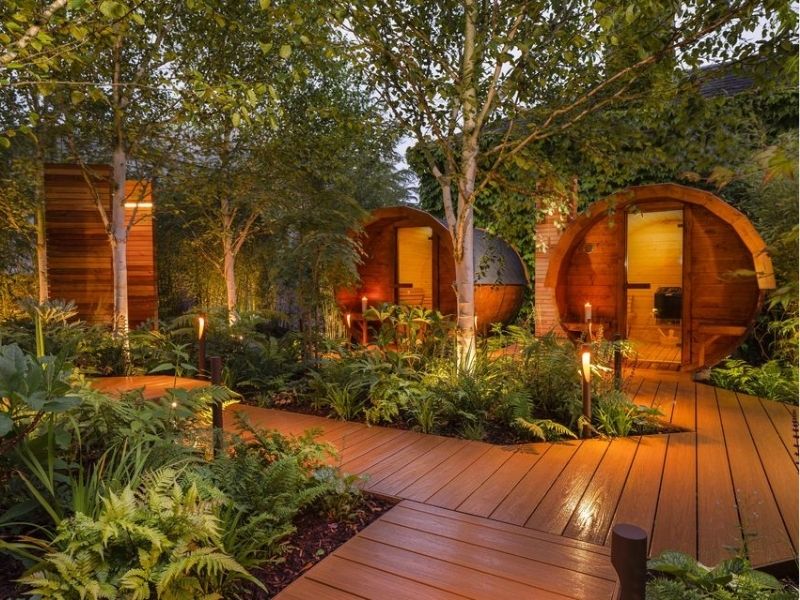
From barrels to luxury: where spas fit into the picture.
Independent operators have transformed sauna use into something familiar and frequent. That shift hasn’t taken business away from established spas; if anything, it has built a larger, more informed audience for thermal experiences.
People now know what they like: dry heat, sea views, post-dip warmth, a clear head afterwards. They know the basics before they even book a spa day. Many are already attending weekly sessions. Spas, with their scale and expertise, can take that routine and make it more immersive.
Outdoor spaces in Chill Spa at the Ice House Hotel, Aqua Sana Forest Spa, Galgorm, Finn Lough, The K Club, Castle Leslie and recently opened The Spa Breaffy’s outdoor spa area, offer what mobile setups can’t: multiple heat rooms, cold-plunge pools, outdoor relaxation areas, and time to unwind without the limits of a trailer and a tide schedule. They also provide year-round reliability, changing facilities, and controlled environments that some people prefer.
We’re also seeing spas adopt more flexible pricing, introducing thermal-suite access without requiring a full treatment booking. That brings regular sauna users into a new space: some will come for a quick reset, others will stay longer for a full spa day. Either way, the barrier to entry is lower.
While independent saunas got Ireland comfortable with heating up in the outdoors, larger spa facilities are building upon the trend.
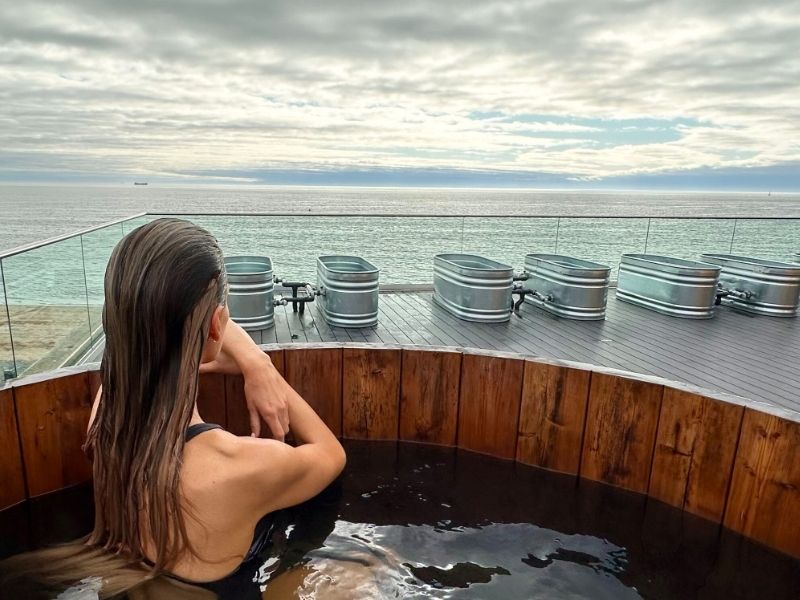
What happens next: Ireland’s sauna culture finds its shape.
The pace of growth raises an obvious question: what does the next phase of Ireland’s sauna culture look like? More than half of all operators opened in 2025, so it is reasonable to expect the sector to settle and reshape itself.
Some coastal areas are already showing signs of pressure. High-traffic locations with limited space may reach their limits first, especially where several mobile units rely on the same public access points.
Operators themselves expect a period of consolidation. Peter Priestley of Tigh ’N Alluis believes competition will improve standards and highlight the difference between businesses that offer a strong experience and those that are less consistent. “There are hundreds of saunas open now. That is great for customers as sauna becomes more accessible. For sauna businesses, it will drive competition and lead to an improvement in standards. It will whittle out the halve arsed operators and the passionate businesses will rise. We are focused on bringing more than just a sauna. The spiritual aspect of our operation is what is different.”
Differentiation is already visible. Some operators are moving into more permanent sites with multiple saunas and cold-plunge facilities. Others focus on programming, guided Aufguss sessions, or integrating elements of Irish tradition and landscape. Indoor city locations are helping operators balance out seasonal patterns, while coastal saunas rely on strong local communities and winter routines.
A move toward clearer structure is also underway. A newly forming sauna society is expected to contribute to better guidelines, stronger booking systems and more consistent safety standards. This shift reflects a sector that is beginning to mature rather than expand without direction.
Dee and Ed from Hot Pod Saunas see the long-term trajectory as positive. Their experience supports the idea that demand is not new, only newly visible. “There has actually always been a demand. We were doing it hundreds of years ago in Ireland,” Dee says. “We are a coastal nation. We love sea swimming. Adding sauna made it more appealing and easier to enjoy.”
For Dee, the cultural shift is the most important factor. “It is here to stay. There has been a shift in our culture. It is a positive evolution in Ireland, and we see people of all ages coming to our saunas.”
What began as mobile trailers and seaside experiments is now becoming a stable part of Ireland’s wellness landscape. The long-term picture is likely to be shaped by routine, community and quality rather than sheer numbers.


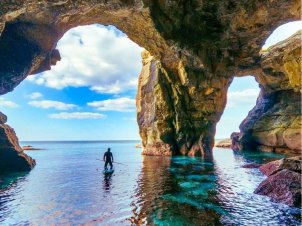
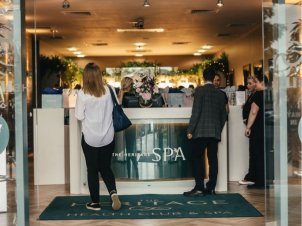
![The Spa at Kinsale Hotel & Spa partner with [comfort zone]](https://spas.ie/blog/wp-content/uploads/2025/05/1040909-302x226.jpg)